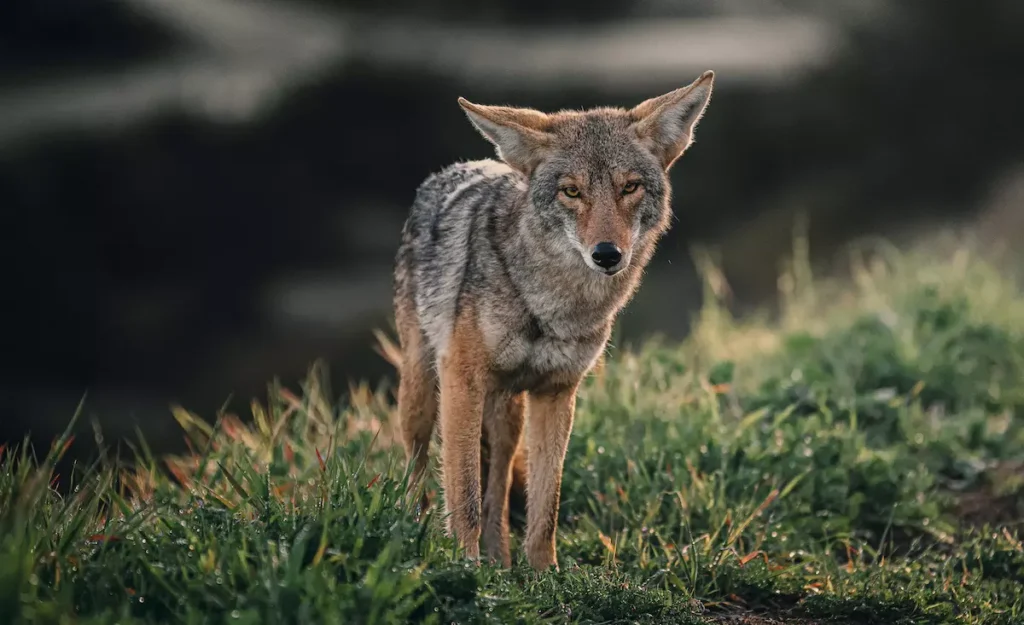
Wildlife Killing Contests: 19th-Century Mindset, 21st-Century Munitions
Body-Count Killers Disgrace Animal Protectors and Hunters Alike
- Wayne Pacelle
Some of the names of the events sound playful at first: Fur Bang!, Critter Gitter, Santa Slay, Fox Frenzy.
Others are more literal and diabolical sounding: Crow Shoot, Coyote Carnage
These are Wildlife Killing Contests (WKCs). And no matter how the organizers and participants describe them, they are a disgraceful display of human cruelty and wastefulness, relics of an earlier era in American environmental history when men and technology converged to slaughter animals for the hell of it.<
On any given weekend, across the United States, there are wildlife killing contests underway, especially in the West. While some forms of animal exploitation are waning – wild animal circuses, legal animal fighting, raising of calve in tight stalls for veal – WKCs are growing in number and range. And that means the body counts are growing too.
Contest organizers advertise to recruit participants who are vetted before being granted registration. (The general public is not allowed to know specific locations to avoid the “antis” recording or otherwise interfering with their killing sprees.) Participants are incentivized to kill as many of the targeted species as possible within the allotted time. The victims are bobcats, crows, foxes, raccoons, and even wolves and mountain lions – but most often, they are coyotes. In coyote killing contests, there are often side bets for killing the largest and smallest coyotes: the “big dog” and “little dog” bets.
In the end, they leave a trail of death and destruction and only pack out their prizes: belt buckles, hunting equipment, bragging rights and cash. Some participants, sportsmen’s groups and sponsors take away some serious money. Coyote killers in a Pennsylvania contest were recently awarded nearly $50,000. While there are plenty of small-pool money contests happening year-round, the big stakes come into play when the sportsmen’s groups and sponsors host their larger annual contests.
The common component for these events is that animals are not consumed. In that sense, WKCs are more like animal fights, where the joy is in the bloodletting and the animals are tossed aside once the life has been drained from them. Those animals are left to rot. That means the killing keeps on going, since the carcasses are often consumed by scavenging animals who ingest the lead ammunition lacing the bodies, slowly and painfully poisoning them to death.
And lest the killing not keep up with technology, there are now smartphone apps allowing participants to enter contests remotely. These apps record the GPS locations and times of kills, and when combined with photos of the dead, are valid entries in region- and nation-wide contests such as the “U.S. Predator Challenge.”<
Wildlife Killing Contests violate every tenet of the frequently touted “North American Model of Wildlife Conservation.” While the model itself earns just criticism for promoting a ‘utilization’ model of wildlife, it also declares that wildlife belongs to the public (not just rich landowners), should not be commercialized, and should only be killed for a legitimate purpose. It’s cloaked in the notion that science is the proper lens through which to take wildlife management actions. WKCs make mincemeat of these principles.
The public and even elected officials remain largely unaware of these contests. When the public does find out – often by seeing graphic images of the hunters’ social media accounts – they are appalled, even if they have no particular affection for crows or coyotes. The unnecessary waste of sentient life, and the clear zest for killing in evidence, seems to profoundly offend most people, regardless of political or ideological persuasion.
Many contest participants make feeble attempts to attach some social benefit to their bloodlust pursuit – arguing they are donating some portion of contest proceeds to friends in need, or literally saving pets, livestock and even small children. Morally perceptive people know better, and the tide is beginning to turn. Elected officials, driven by their constituents, are taking notice.
In recent years, two states have enacted legislation prohibiting or limiting wildlife killing contests: Vermont and California. But there’s now a growing movement stirring against them as Montana, New Jersey, New Mexico, New York, Oregon, and Wisconsin consider legislative remedies this year. Cities and counties across Arizona are passing resolutions against WKCs in their geographies. The land commissioner of New Mexico has recently banned killing contests on stand-controlled lands in New Mexico and the city council of Albuquerque also unanimously passed a resolution calling for a state legislative ban on killing contests.
Because this bloodshed usually happens on public lands, there is concern that contest organizers and participants are not following well-established rules set forth by the Bureau of Land Management (BLM) and the U.S. Forest Service. Both entities, which represent a vast portion of our public lands, have existing regulations that prohibit commercial uses of wildlife, and wildlife killing contests would seem to fit precisely into that definition.
United States Representative Grijalva, D-Ariz., the chairman of the U.S. House Natural Resources Committee, has taken a public position against WKCs in social media posts: “Do you want a coyote-killing contest on your #public lands this Saturday? Neither do we. Neither do #Arizona locals in the threatened area. Let people know this is happening.”
Congressman Grijalva has it just right. Let’s take action to put an end to these wildlife killing sprees. Make local, state, and federal lawmakers aware this is happening, and urge them to intercede. As with animal fighting, we may not be able to convince the participants that the conduct is wrong. But we can invoke the law to put a stop to their cruelty.